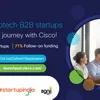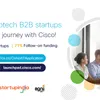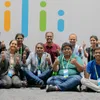Empower, engage, experiment: Tips on design thinking and innovation by Vivasvan Shastri of Cisco
A supportive environment that plays to employee strengths and creativity is key for a culture of innovation, as this in-depth interview reveals.
In this speaker interview from the Intrapreneurship Conclave 2021, we share compelling insights and examples of enterprise innovation. See Part I, Part II, Part III, Part IV, and Part V of our article series as media partner, as well as our write-up on the 2019 edition and 15-part article series on the CII Global Knowledge Summit.
Vivasvan Shastri is Director for CX Engineering and Product Incubation at . He has 22 years of experience, spanning products and services. His global experience includes managing engineering, product management, and business development teams in Europe, China, Latin America, and India.
He is a published author, blogger, and avid reader. He is also a Gallup-certified Strengths Coach. His motto in life is ‘Be Good, Do Good.'
Vivasvan joins us in the interview on design thinking, innovation culture, pandemic resilience, and the role of corporate accelerators.
Edited excerpts from the interview:
YourStory [YS]: What are some outstanding examples of innovation you have come across in society in dealing with the pandemic?
Vivasvan Shastri [VS]: Our society's response to the pandemic has all the imprints of design thinking – human-centred, collaborative, rapid prototyping, testing, and iteration.
No one had any experience dealing with a pandemic, but we never lost sight of the needs of our communities throughout the process. You saw multiple stakeholders collaborate to ramp up testing, tracing, and treatment. SOPs were prototyped, tested, and refined continuously.
Within the corporate world, teams digitised their work lives. Hybrid work is now the new normal. Communities formed self-help groups to support citizens who were quarantined or impacted by COVID-19. Education and healthcare have undergone a digital transformation overnight.
The way we live, work, learn, and play has been transformed, and technology is now at the core of this new normal.
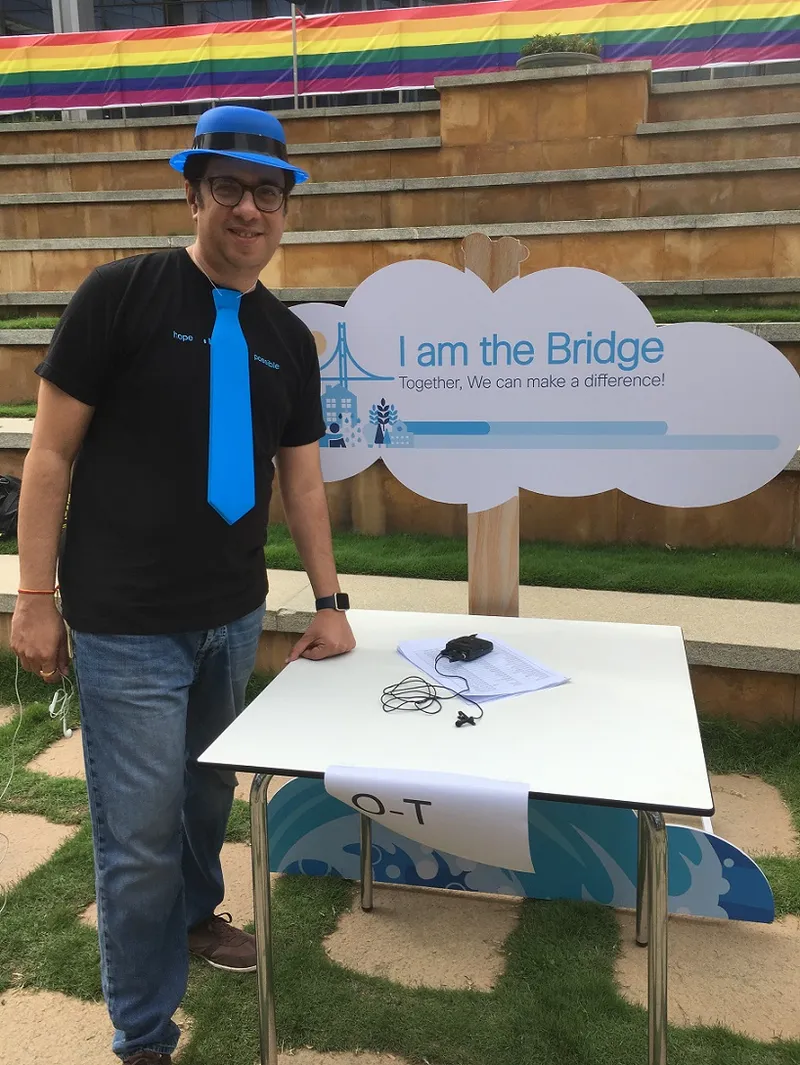
Vivasvan Shastri
YS: What are some principles of innovation that have been particularly reinforced during the pandemic? Will they be relevant once we get to the 'new normal' as well?
VS: The three fundamental principles of innovation that have been reinforced due to the pandemic are:
1. Empower everyone: The best ideas can come from anywhere.
2. Engagement: Innovation is a team sport, and engagement is critical to get all stakeholders to collaborate.
3. Experiment more: You will never get it right the first time. To innovate prototypes, learn and improve is the only way forward.
YS: How does business creativity differ from business innovation?
VS: Innovation is creativity with execution. I believe that adoption is the difference between creativity and innovation. You can be very creative, but if the work has no users, then it's not an innovation. For once, we're all on the same side of history.
We have the chance to learn and unlearn together, so willingness to collaborate in this new world will be the key to impactful innovation and to capitalise on the opportunities that lie ahead of us.
YS: What are the core elements of your innovation framework?
VS: The Cisco of today is more agile, innovative, and focussed. Innovation does not reside in a framework but is rooted in our culture. We empower every individual to innovate by focusing on their strengths. We drive engagement at the team level to facilitate collaboration and sharing.
We have innovation rituals such as hackathons to provide a platform for everyone to get their ideas on the product roadmap. Cisco Design Thinking provides the necessary mindset and toolset through the journey.
In alignment with our innovation framework, we also run a B2B deeptech corporate accelerator programme, Cisco LaunchPad. The programme values the power of collaboration and engages with high-potential startups working on disruptive technologies.
Cisco LaunchPad runs in line with Cisco’s goal of developing solutions that bring value to the organisation and the society through collaboration.
YS: How can one recognise and stay true to one's strengths when employees are often required to do 'what the boss says?'
VS: The priority in the fast-emerging digital world must be to adopt a people-first stance, leverage digital technologies to ensure an enhanced employee experience regardless of where one is working, and help workforces adjust to a new way of working.
At Cisco, we have moved away from performance management to investment and rolled out a strength assessment to all our employees globally. In our weekly Q&A sessions, we ask three primary questions: What did you love about your work? What did you loathe? What are your needs?
These three primary questions are adequate for any leader to understand an individual's strengths and ensure that they get work aligned to their strengths. Additionally, it helps leaders take corrective action and lend support wherever necessary.

Vivasvan Shastri, Cisco
YS: What are the elements of employee engagement to ensure sustainable innovation in the long run?
VS: There are three elements of employee engagement that are key to innovation.
1. Trust and safety: Fear of failure is one of the biggest barriers to innovation. A supportive environment is critical to sustaining innovation.
2. Team support: Innovation is team support. An engineer who has an idea may not have in-depth knowledge of specific technologies like AI or ML. That's where team support comes into play. This kind of teamwork will encourage more people not to give up on their ideas.
3. Strengths: Employees who are encouraged to be their best selves at work and hone their strengths every day are more likely to innovate.
YS: There are many definitions and frameworks of organisational innovation out there – what makes your framework different?
VS: Innovation in today's disruptive digital economy can come from anyone and anywhere — inside and outside any enterprise. This means companies must fuel co-innovation like never before across all functions, grade levels, geographies, partners, and customers within, without, and among their own walls.
Frameworks have a lifespan, but culture is timeless. Two decades ago, we did not have Cisco Design Thinking, yet we were still as innovative then as we are today.
YS: Innovation seems inherently somewhat 'messy.' How can frameworks like your institutionalise innovation while also working around some of the accompanying creative chaos and dissonance?
VS: Frameworks can empower and encourage anyone and everyone to innovate. It provides a toolset and roadmap to anyone with an idea. It can democratise innovation and make the journey more inclusive and participative.
YS: What are the advantages and limitations of using monetary rewards to incentivise innovation? What works better?
VS: Monetary rewards follow the law of diminishing marginal returns. While they are great at the start of your innovation journey, they have little impact as you scale. Today’s Gen Z and millennial workforce want to work for companies with a strong sense of purpose.
According to Cone Communications Millennial Employee Engagement Study, about 64 percent of millennials won't take a job if their employee doesn't have a strong CSR policy, and 83 percent would be more loyal to a company that helps them contribute to social and environmental issues.
YS: Can you cite a few examples of your framework in action at Cisco?
VS: Cisco Design Thinking (CDT) framework remains at the core of everything we design and build. This includes products, services, and processes.
For example, our engineering teams use CDT to discover customers' unmet needs. Our HR teams use CDT to design employee-friendly policies. Our CTO organisation provides a Design Thinking Coach to teams participating in Hackathons.
YS: What are the challenges in doing innovation effectively in a largely digital environment? For example, during work from home. What are some useful tools or approaches to deal with these challenges?
VS: I believe collaboration is the key to driving innovation. Serendipity has become a rare commodity in a digital-first world.
Our Cisco Design Thinking workshops have also gone digital. We extensively leverage our collaboration platform Webex to stay connected with our teams and employee communities securely and seamlessly.
YS: Many of our readers are founders with a large tech background. At what stage should they start embracing the elements of your framework?
VS: This pandemic has thrown the world out of its comfort zone, and to survive in this new world, innovation and disruption have become essential. Therefore, one needs to embrace our framework's elements from the initial stage, from day zero.
YS: As an organisation scales, how can innovators ensure that they get a seat at the decision-making table?
VS: As an organisation scales, one needs to design platforms and processes that empower anyone to present their ideas, collaborate with mentors, and acquire resources to take it to the product roadmap.
YS: How should leaders deal with the situation when equally promising innovations from different teams compete for precious resources and budget?
VS: While there are many frameworks and tools to guide such investment decisions, my personal favourite is the Design Thinking Test to create feasible, viable, and desirable solutions.
1. Feasible: Given the skills and strengths of my team, can we pull this off?
2. Viable: Return on investment
3. Desirable: Will our customers love it?
YS: What are some of the common misconceptions about innovation that you still come across these days?
VS: Despite this growing startup ecosystem, many entrepreneurs continue to prescribe to common innovation misconceptions, which, over time, have become accepted as truth. Here are the most common misconceptions that remain:
1. You need to have proven academic brilliance to innovate
2. You need resources (time, money) to innovate
3. You need to be lucky (right place, right time).
YS: How does Cisco leverage crowdsourcing and startup accelerators to engage with the broader ecosystem for innovation?
VS: Cisco LaunchPad — our B2B corporate accelerator programme — is committed to empowering the startup ecosystem by harnessing modern-day technology's changing dynamics. It is all about a rewarding journey, where we build the "Bridge to Possible" for startups, year on year, cohort by cohort.
We help startups in their scaling journey through collaboration for innovation, industry-leading mentoring, ecosystem/investor connect opportunities, and access to a gamut of Cisco resources.
YS: What are your favourite books on innovation and related fields? What are some good online resources you would recommend?
VS: My favourite books are Simply Fly by Captain Gopinath and Leonardo da Vinci by Walter Isaacson. For online resources, check out Cisco Launchpad.
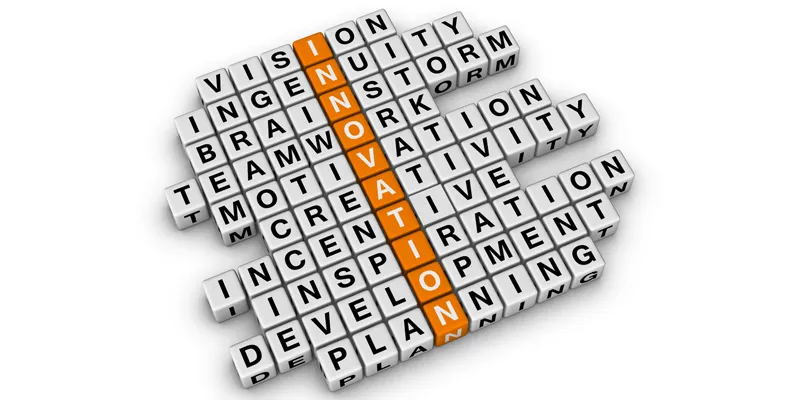
YS: Looking ahead, what are some emerging trends you see in the area of innovation?
VS: The three key trends shaping the innovation landscape are:
1. Interdisciplinary: There would be more innovation at the intersections of disciplines.
2. Software-led: Software will be a critical enabler
3. Inclusive and participative: Innovations will be more bottom-up and not only emerge from Innovation Labs.
YS: How can awareness about innovation be increased in society? Can it be taught in schools also?
VS: This pandemic has forever changed the world we live in. In this new world, investing in innovation to adapt to a dynamic environment isn't just recommended but is essential to survive and thrive.
Organisations or individuals can no longer assume that the strategies that have worked for them in the past will continue to work for them in the new normal. Therefore, they need to be willing to take risks and experiment to gain an edge.
Everyone can innovate. All you need is an innovative mindset that encompasses creativity, knowledge, and perseverance.
Edited by Suman Singh



